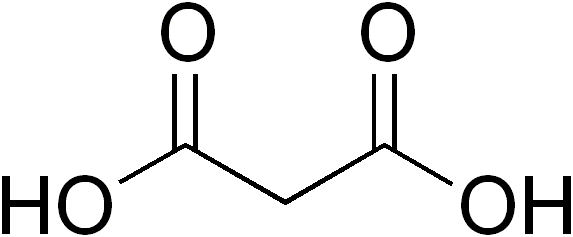|
Fumarylacetoacetate
Fumarylacetoacetic acid (fumarylacetoacetate) is an intermediate in the metabolism of tyrosine. It is formed through the conversion of maleylacetoacetate into fumarylacetoacetate by the enzyme maleylacetoacetate isomerase. See also * Fumarylacetoacetate hydrolase Fumarylacetoacetase is an enzyme that in humans is encoded by the ''FAH'' gene located on chromosome 15. The enzyme is involved in the catabolism of the amino acid tyrosine in humans. Function Fumarylacetoacetate hydrolase (FAH) is a protein hom ... References Dicarboxylic acids Beta-keto acids Enones {{biochem-stub ... [...More Info...] [...Related Items...] OR: [Wikipedia] [Google] [Baidu] |
Fumarylacetoacetate Hydrolase
Fumarylacetoacetase is an enzyme that in humans is encoded by the ''FAH'' gene located on chromosome 15. The enzyme is involved in the catabolism of the amino acid tyrosine in humans. Function Fumarylacetoacetate hydrolase (FAH) is a protein homodimer which cleaves fumarylacetoacetate at its carbon-carbon bond during a hydrolysis reaction. As a critical enzyme in phenylalanine and tyrosine metabolism, 4-Fumarylacetoacetate hydrolase catalyzes the final step in the catabolism of 4-fumarylacetoacetate and water into acetoacetate, fumarate, and H+ respectively. These hydrolytic reactions are essential during aromatic amino acid human metabolism. Furthermore, FAH does not share known protein sequence homologs with other nucleotides or amino acids. Reaction mechanism The active site of FAH contains Ca2+ which acts to bind the substrate and a Glu-His-Water catalytic triad functions where the imidaxole ring of His133 activates a nucleophilic water molecule to attack the carbon- ... [...More Info...] [...Related Items...] OR: [Wikipedia] [Google] [Baidu] |
Tyrosine
-Tyrosine or tyrosine (symbol Tyr or Y) or 4-hydroxyphenylalanine is one of the 20 standard amino acids that are used by cells to synthesize proteins. It is a conditionally essential amino acid with a polar side group. The word "tyrosine" is from the Greek ''tyrós'', meaning ''cheese'', as it was first discovered in 1846 by German chemist Justus von Liebig in the protein casein from cheese. It is called tyrosyl when referred to as a functional group or side chain. While tyrosine is generally classified as a hydrophobic amino acid, it is more hydrophilic than phenylalanine. It is encoded by the codons UAC and UAU in messenger RNA. The one-letter symbol Y was assigned to tyrosine for being alphabetically nearest of those letters available. Note that T was assigned to the structurally simpler threonine, U was avoided for its similarity with V for valine, W was assigned to tryptophan, while X was reserved for undetermined or atypical amino acids. The mnemonic t''Y''rosine was ... [...More Info...] [...Related Items...] OR: [Wikipedia] [Google] [Baidu] |
Maleylacetoacetate
4-Maleylacetoacetate (4-maleylacetoacetatic acid) is an intermediate in the metabolism of tyrosine. It is converted to fumarylacetoacetate by the enzyme 4-maleylacetoacetate cis-trans-isomerase. Gluthathione coenzymatically helps in conversion to fumarylacetoacetic acid. See also * Homogentisate 1,2-dioxygenase Homogentisate 1,2-dioxygenase (homogentisic acid oxidase, homogentisate oxidase, homogentisicase) is an enzyme which catalyzes the conversion of homogentisate to 4-maleylacetoacetate. Homogentisate 1,2-dioxygenase or HGD is involved in the ca ... Beta-keto acids Enones Diketones {{biochem-stub ... [...More Info...] [...Related Items...] OR: [Wikipedia] [Google] [Baidu] |
Maleylacetoacetate Isomerase
In enzymology, maleylacetoacetate isomerase () is an enzyme that catalyzes the chemical reaction :4-maleylacetoacetate \rightleftharpoons 4-fumarylacetoacetate This enzyme belongs to the family of isomerases, specifically ''cis''-''trans'' isomerases. The systematic name of this enzyme class is 4-maleylacetoacetate ''cis''-''trans''-isomerase. 4-Maleylacetoacetate isomerase is an enzyme involved in the degradation of L-phenylalanine. It is encoded by the gene glutathione S-transferase zeta 1, or GSTZ1. This enzyme catalyzes the conversion of 4-maleylacetoacetate to 4-fumarylacetoacetate. 4-Maleylacetoacetate isomerase belongs to the zeta class of the glutathione S-transferase (GST) superfamily.; Mechanism In the phenylalanine degradation pathway, 4-maleylacetoacetate isomerase catalyzes a ''cis''-''trans'' isomerization of 4-maleylacetoacetate to fumarylacetoacetate. 4-maleylacetoacetate isomerase requires the cofactor glutathione to function. Ser 15, Cys 16, Gln 111 ... [...More Info...] [...Related Items...] OR: [Wikipedia] [Google] [Baidu] |
Dicarboxylic Acids
In organic chemistry, a dicarboxylic acid is an organic compound containing two carboxyl groups (). The general molecular formula for dicarboxylic acids can be written as , where R can be aliphatic or Aromatic compound, aromatic.Boy Cornils, Peter Lappe "Dicarboxylic Acids, Aliphatic" in Ullmann's Encyclopedia of Industrial Chemistry 2014, Wiley-VCH, Weinheim. In general, dicarboxylic acids show similar chemical behavior and reactivity to carboxylic acid, monocarboxylic acids. Dicarboxylic acids are usually colorless solids. A wide variety of dicarboxylic acids are used in industry. Adipic acid, for example, is a precursor to certain kinds of nylon. A wide variety of dicarboxylic acids are found in nature. Aspartic acid and glutamic acid are two amino acids found in all life. Succinic and fumaric acids are essential for metabolism. A large inventory of derivatives are known including many mono- and diesters, amides, etc. Partial list of saturated dicarboxylic acids Some common ... [...More Info...] [...Related Items...] OR: [Wikipedia] [Google] [Baidu] |



